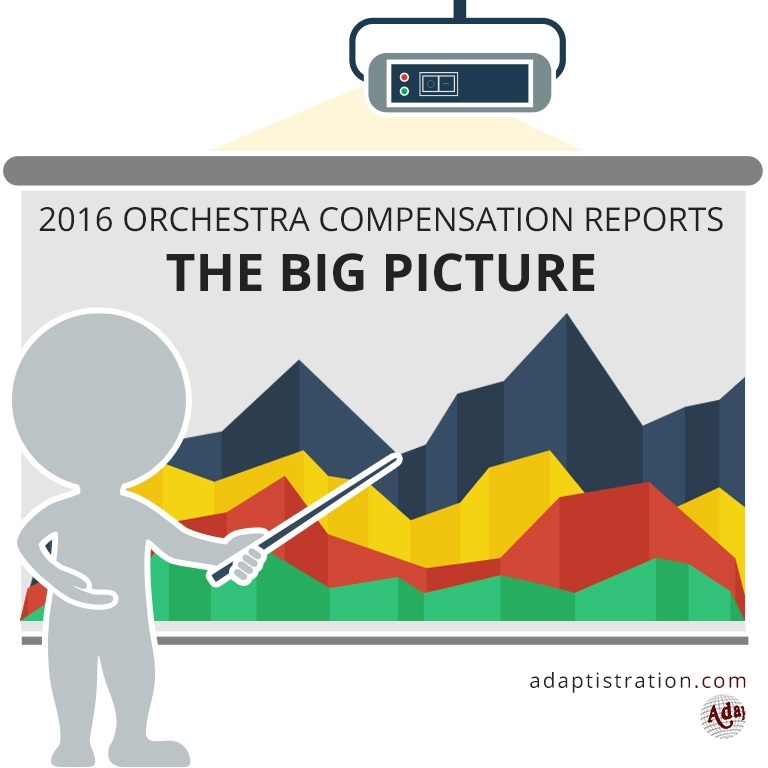Each year, one of the most popular items in the orchestra compensation reports is a big picture overview of all compensation alongside Total Expenditure figures. If you’ve been looking for something that shows all the report values in a single chart, this is your article.
Sorry, but this information is only made available for one year until the following season’s reports are published. Copies are available for a fee (feel free to inquire), or you can begin compiling your own database by building a comprehensive library of orchestra 990s, available from the Adaptistration Store.
17 Year Trends
Although the Orchestra Compensation Reports have been around since 2005 (which covered the 2003/04 season) my 990 archive extends back through the 1999/00 season. Consequently, this overview article is an excellent vehicle for reaching back into those archives usually reserved for consulting work and extracting information to share.
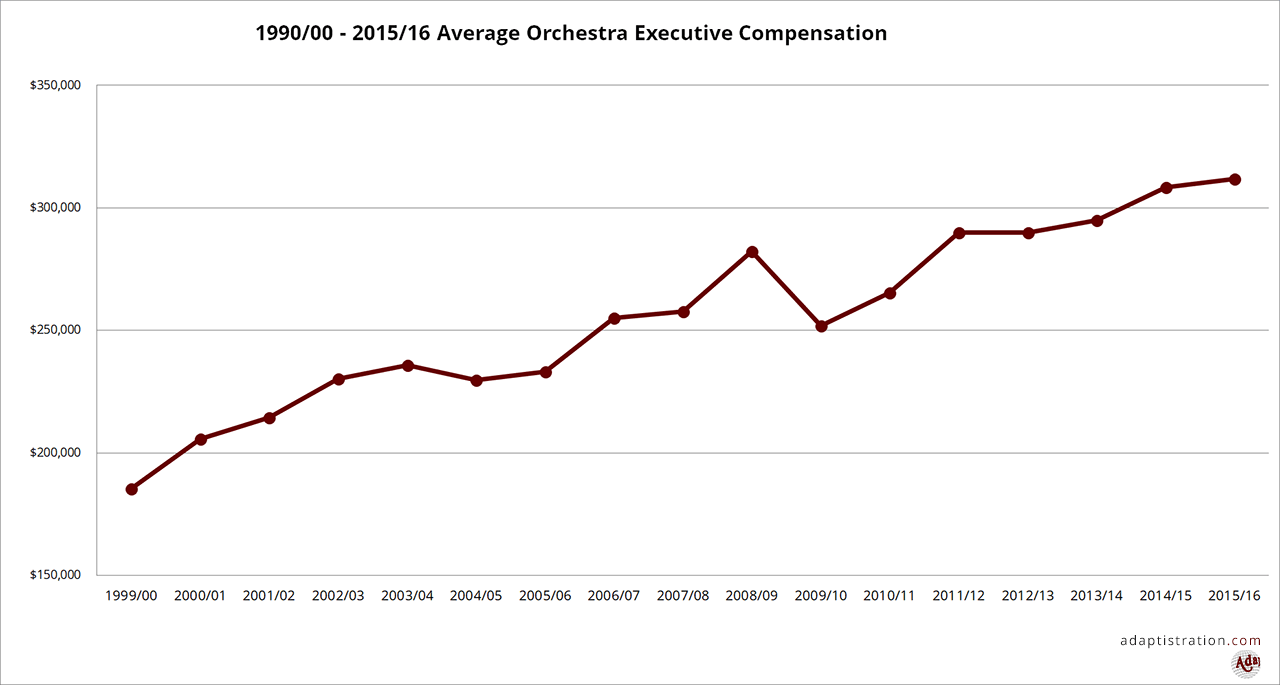
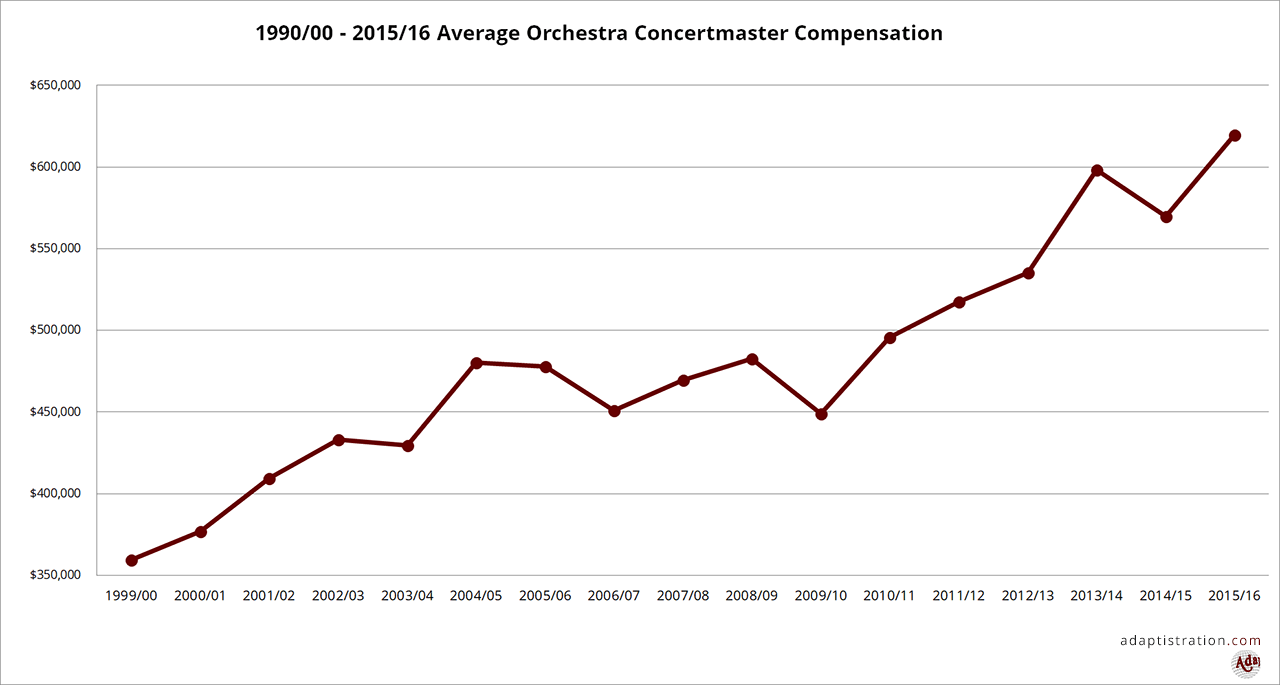
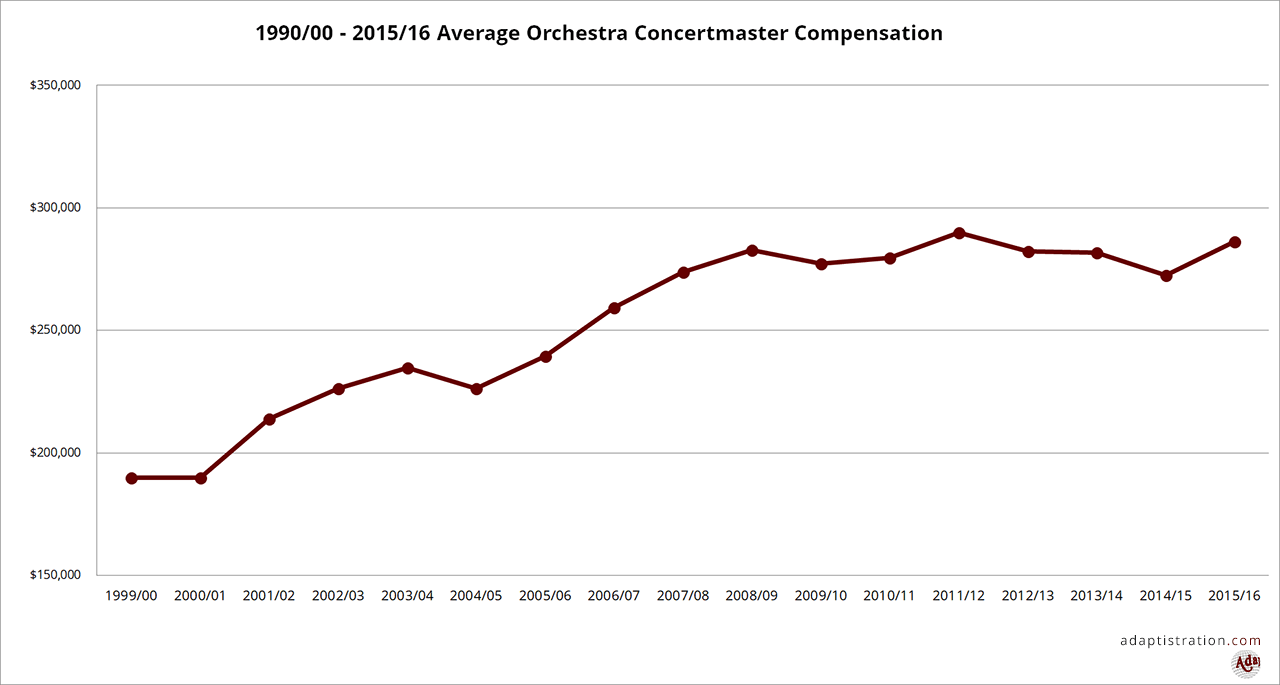
The Deliberation Continues
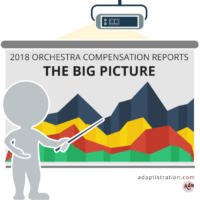 When the compensation reports were launched back in 2005, there was a great deal of reader discussion about each stakeholder group’s respective value. Those were paired with questions about why stakeholder groups didn’t share comparatively equal gains and losses across seasons. In the wake of the economic downturn, those discussions began to wane, but the spike in top earners from music director and executive stakeholders have once again sparked that core discussion.
When the compensation reports were launched back in 2005, there was a great deal of reader discussion about each stakeholder group’s respective value. Those were paired with questions about why stakeholder groups didn’t share comparatively equal gains and losses across seasons. In the wake of the economic downturn, those discussions began to wane, but the spike in top earners from music director and executive stakeholders have once again sparked that core discussion.
For example, the Dallas Symphony Orchestra’s (DSO) unprecedented payouts to music director Jaap van Zweden are without comparison. The DSO paid more for their music director than orchestras with more than twice the total expenditures.
There are no obvious differences in workload or duties and responsibilities between van Zweden and music directors from larger budget peers; consequently, that extreme imbalance is difficult to justify when the remaining DSO administrative and musician stakeholders have not enjoyed similar increases.
The following chart helps illustrate that imbalance. It shows the $1,228,246 increase in the DSO’s 2015/16 season total expenditures and how much of that went toward the increase in music director compensation and how much was left over for all other activity.
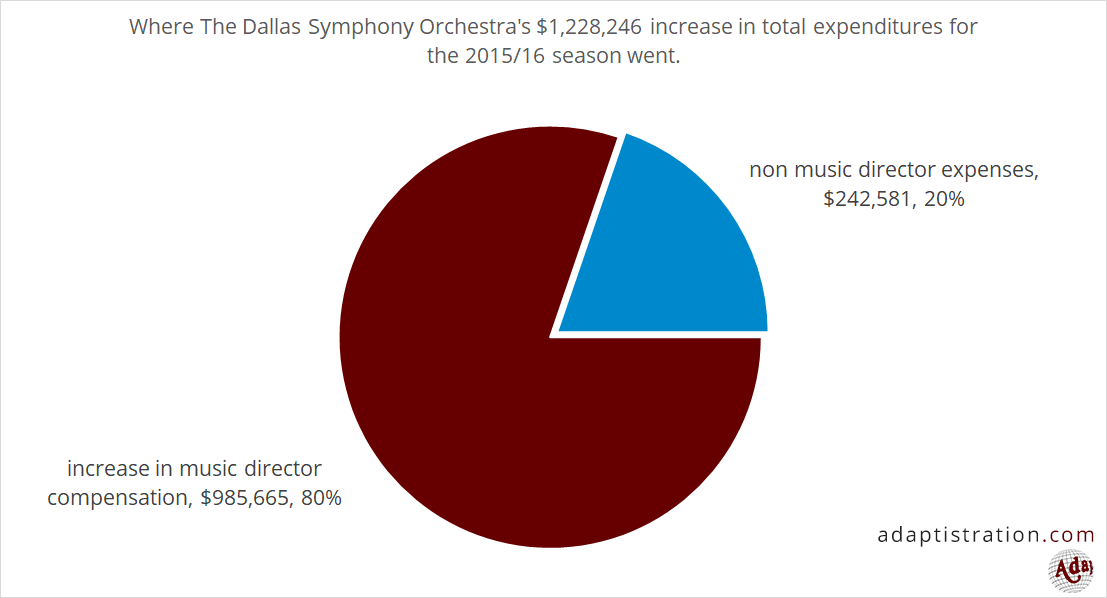
Since its inception, the purpose of the Orchestra Compensation Reports is to help reinforce the value of transparency and inspire patrons to create a stronger connection with their local orchestra and how it functions.
To that end, it has been wonderful watching discussions across social media and other media outlets unfold. Yes, there’s always going to be an element of salaciousness but that quickly melts away into more meaningful discussions surrounding the systems used to determine whether the field is rewarding effort or achievement.
Interested In Doing Your Own Analysis But Don’t Have The Data?
Then you’re in luck because I’ve been making my private stash of orchestra 990s available for purchase at the Adaptistration Store.
As of the time this article was published, you can purchase everything back through the 2005/06 season, but it will eventually go all the way back to the 1999/00 season!
Each season’s worth of 990s cost $25 for instant download and multiple season buys come with bulk discounts:
- purchase 2-5: five percent discount
- purchase 6-10: 10 percent discount
- purchase 11-15: 15 percent discount
- purchase 20+: 20 percent discount
Features:
- They are grouped by season.
- The default random alpha-numeric filenames have been changed to the orchestra name (because opening a bunch of files to find the one you need is for chumps).
- The files have been processed through Adobe Acrobat’s optical character recognition (OCR) scan. This will make the files keyword searchable (a huge time saver!).
- Each season comes with a corresponding notes document pointing out any need-to-know items. For example, when an orchestra changes its fiscal year it is common to find two IRS filings, one that covers time through the end of the previous fiscal year and one to cover the extra time through the end of the new fiscal year.
- You’ll be able to download the file immediately after completing your purchase and the password to unzip the file will be included as a separate pdf file download.

